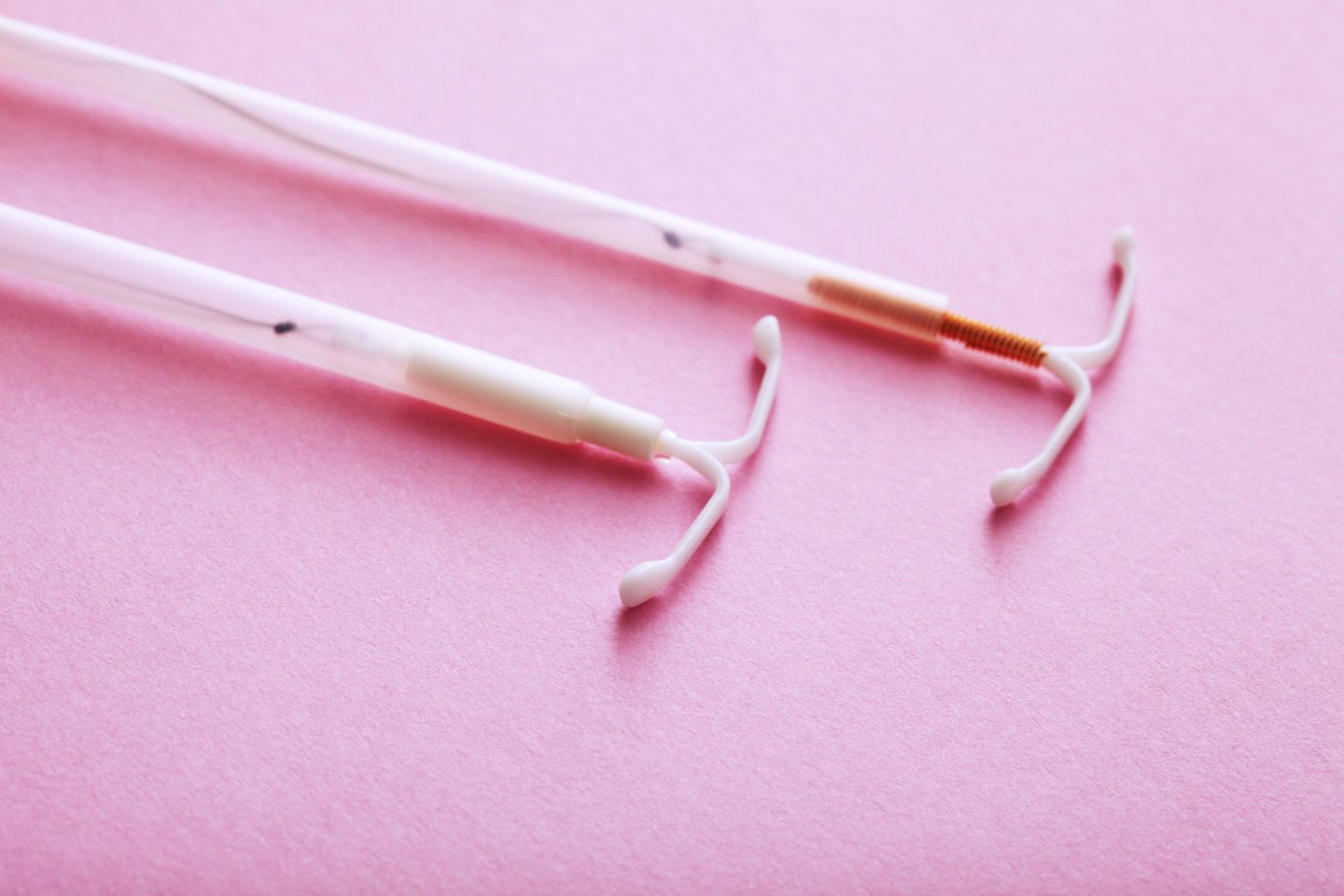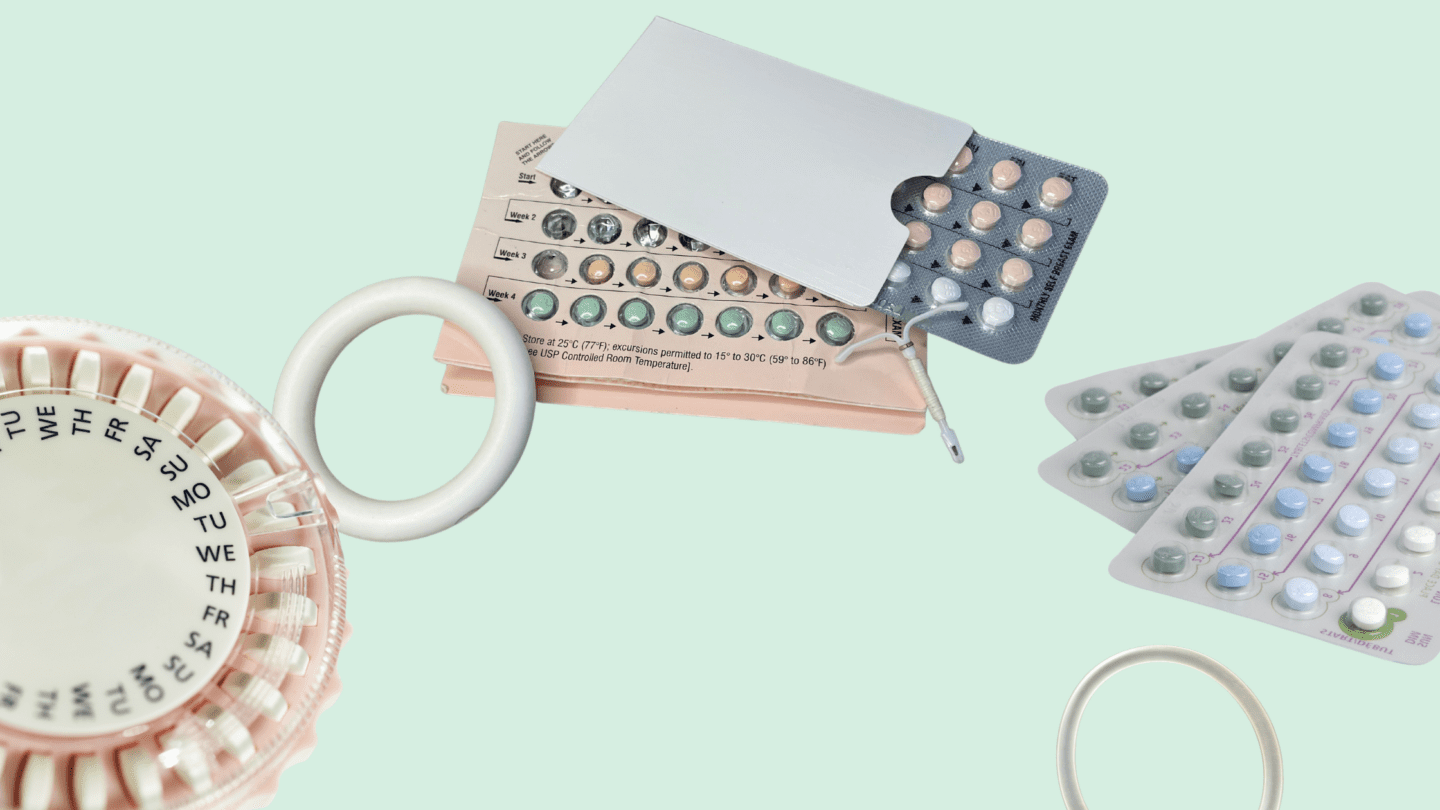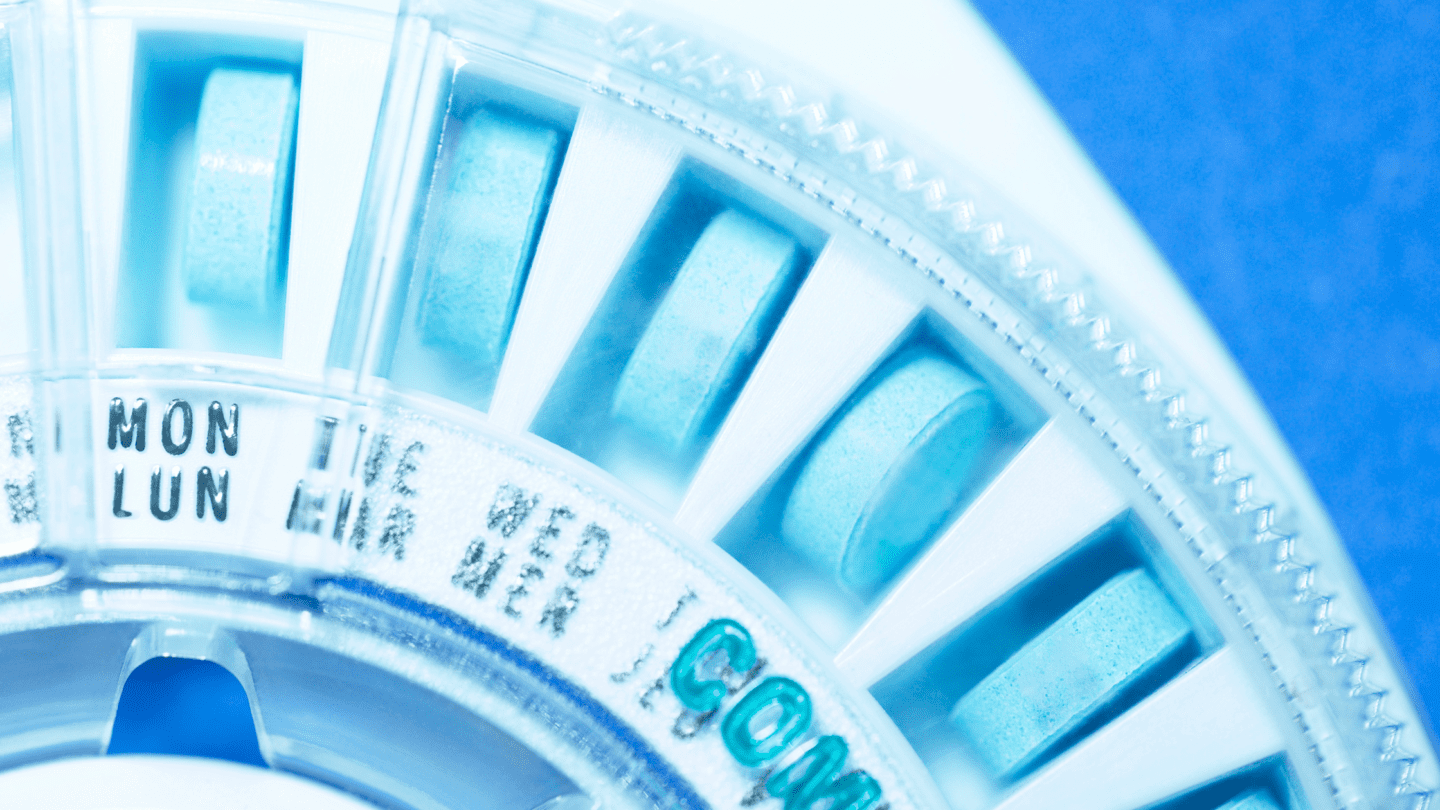If you’re thinking of getting an intrauterine device, or IUD, you’ve probably heard that there are two main types of IUDs: non-hormonal IUDs and hormonal IUDs. There are a number of different hormonal IUDs, but when it comes to the non-hormonal side there’s just one: the copper IUD.
But what’s the difference between copper vs. hormonal IUDs? While both kinds of IUDs offer highly effective , and can last for years, there are a few differences in how copper IUDs and hormonal IUDs prevent pregnancies.
Hormonal IUDs like Mirena and Kyleena contain a reserve of the sex that they release over time. These hormones prevent pregnancy,1 and some people rely on them for other beneficial side effects, like reduced bleeding, cramps, and acne.2
The copper IUD, which goes by the brand name Paragard, doesn’t contain hormones. Instead it relies on the way copper affects sperm to stop you from getting pregnant.3 It doesn’t cause many of the side effects of hormonal IUDs, which can be both for better and for worse.
The copper IUD can also function as emergency contraception, as long as it’s inserted within five days of having sex.4 A 2021 study also suggests that hormonal IUDs may work as emergency contraception, too, though that hasn’t been studied quite as much.5
As with any , IUDs affect different people in different ways. You can prepare ahead of time by better understanding both your own body and the various IUD options on offer. The first choice? Deciding between copper and non-hormonal IUDs. Here’s what you need to know.
Is adyn right for you? Take the quiz.
What is an IUD?
Both copper and hormonal IUDs are T-shaped pieces of plastic that are inserted into your . The arms snap out once they’re inserted to hold it in place, and there’s a string that’s used to take it back out. IUDs prevent pregnancies by either releasing hormones or affecting how sperm swim. They’re more than 99 percent effective at preventing pregnancy.6 Your IUD will be inserted by a doctor or other trained medical professional.
Whether copper or hormonal, all IUDs eventually need to be replaced. How long an IUD lasts varies by brand. Your IUD will be removed by a doctor or nurse, and you can have another one inserted right away if you want. You can also have your IUD taken out at any point if you choose.6
How do hormonal IUDs work?
There are four brands of hormonal IUD in the U.S. right now: Mirena, Liletta, Kyleena, and Skyla. All of these hormonal IUDs contain the sex , which is an artificial version of the natural .
The main way that stops you from getting pregnant is by preventing the release of an egg from your . As a secondary measure, also thickens your cervical mucus, which makes it harder for sperm to get through, and prevents an egg from implanting in the lining of your , should one get released.7
The hormonal IUDs on the market today all contain a called levonorgestrel, which they release a little bit at a time. Different IUDs contain different initial amounts of , and they release it in slight different amounts:
- Mirena: 20 micrograms/day8
- Liletta: 20 mcg/day9
- Kyleena: 17.5 mcg/day10
- Skyla: 14 mcg/day11
The amount of released by each hormonal IUD will decrease over time as its reservoir is depleted. But every hormonal IUD will last for years, and it will remain effective even if the amount of it releases goes down a bit. All you need to do is make sure you get your IUD removed by the expiration date.
How do copper IUDs work?
The copper IUD, called Paragard, doesn’t have any hormones in it. Instead, it’s wrapped in threads of copper wire. Copper interferes with sperm’s ability to swim, preventing them from reaching an egg and fertilizing it.3
The Centers for Disease Control and Prevention says the copper IUD can be used for emergency contraception, meaning you can use it instead of something like Plan B even after you’ve had sex.4 For it to work as emergency contraception, you need to have a copper IUD inserted within five days of having sex.
How long do IUDs last?
All IUDs need to be replaced, but how long an IUD lasts is different for each type:
- Paragard: 10 years3
- Mirena: 8 years12
- Liletta: 8 years9
- Kyleena: 5 years10
- Skyla: 3 years11
These IUD expiration dates can change as updated research provides new data. For example, Liletta and Mirena were just bumped up from six or seven to eight years based on new guidance from the FDA.13
If your IUD is about to reach the end of its FDA-approved usefulness, you should get it removed by a medical provider. You can choose to get another IUD (either the same brand or another) put in right then, or opt for another kind of , if that’s what you want.
Side effects of copper vs hormonal IUDs
IUDs do have side effects. But it’s important to remember that side effects will probably be different for everyone, based on your biology. Some IUD side effects are short-term, while others can last longer.
Hormonal IUDs side effects are similar to many other types of . Some common hormonal IUD side effects include:
- changes to your bleeding patterns
- vulvovaginitis
- increased bleeding
- headaches
- acne
- nausea
In addition to preventing pregnancy, the in hormonal IUDs can have some positive side effects, too. The Mirena hormonal IUD is approved by the FDA to treat heavy bleeding, and can also help with irregular periods and even symptoms of PMS, among other things.14 (Yes, some of these things are also negative side effects for some people, too — that’s part of the complexity of finding the right !).
If one option isn’t working for you, you can always try a different one — or another kind of entirely.
Unfortunately, there’s not really any good evidence on how the different hormonal IUDs compare in terms of side effects. The most common side effects listed by the FDA do differ slightly between IUDs. And they do release different amounts of each day, so it stands to reason there could be differences. But scientific studies comparing hormonal IUDs haven’t been done yet. Right now, just know that if one option isn’t working for you, you can always try a different one — or another kind of entirely.
Copper IUD side effects don’t have much overlap with those from hormonal IUDs, though both come with an increased risk of abdominal pain and vaginitis. The copper IUD does come with a higher risk of heavier bleeding.
Like what you’re reading? Get the latest straight to your inbox 💌
Studies show that many of the unwelcome side effects people experience from IUDs — both hormonal and non-hormonal — get better, or even go away with time.15 So, after a few months, you might end up liking your IUD a bit better.
There are a few uncommon side effects of IUDs as well, mostly related to the physical device. In rare cases, IUDs can perforate the or break while still inside. If you feel any sudden, sharp pains around your lower abdomen while you have an IUD inserted, you should call a doctor right away. IUDs can also fall out, which isn’t a big concern from a medical perspective but is definitely not what you want to see — and also means you’re not on a contraceptive anymore. If any of these things happen, see a doctor right away.
Finally, it’s worth talking about the pain and discomfort many people feel during IUD insertion. While it’s not bad for everyone, many people report that having an IUD inserted can be extremely painful. It’s something a lot of people think about when they’re deciding what is right for them, and it’s worth taking seriously.
While there’s no evidence that feeling pain when you’re having an IUD put in means anything is wrong, some people report that they’re still in pain or feeling nauseous hours later, and the experience can be pretty stressful. If you think you want to try an IUD but are worried it’s going to hurt, it’s worth talking to your doctor before the procedure to see if there are any options for pain control.
Which IUD is best for me?
Which IUD is right for you and your body depends on a few different factors. Any IUD will be among the most effective options you have for preventing pregnancy. But your choice of IUD can affect the side effects you may feel.
Hormonal IUDs can help treat things associated with your period like heavy bleeding, breast tenderness, and headaches. But the they contain can also bring negative side effects. While copper IUDs don’t have hormones, which can be a definite advantage for some people, they can cause heavier and painful periods. Still, many of these side effects may get better after a few months.
You can get more information on whether hormonal IUDs, copper IUDs, or another type of might suit you better by learning more about your unique body and genetic makeup.
That’s what the adyn test is for — learn more about The Birth Control Test.
-
- Planned Parenthood. “What are hormonal IUDs?” PlannedParenthood.org (N.D.): Accessed 2023 Feb 17.
- Schrager, Sarina, et al. “Beyond birth control: noncontraceptive benefits of hormonal methods and their key role in the general medical care of women.” Journal of Women’s Health 29.7 (2020): 937-943.
- FDA. “Highlights of Prescribing Information: Paragard (Intrauterine Copper Contraceptive).” FDA.gov (2019 Sep).
- CDC. “Classifications for Emergency Contraception.” CDC.gov (2017 Feb 1).
- Turok, David K., et al. “Levonorgestrel vs. copper intrauterine devices for emergency contraception.” New England Journal of Medicine 384.4 (2021): 335-344.
- Lanzola, Emily L., and Kari Ketvertis. “Intrauterine device.” StatPearls [Internet]. (2022 Jul 4).
- Luukkainen, Tapani, Päivi Pakarinen, and Juhani Toivonen. “Progestin-releasing intrauterine systems.” Seminars in Reproductive Medicine (2001).
- FDA. “Highlights of Prescribing Information: Mirena (levonorgestrel-releasing intrauterine system).” FDA.gov (2015 Oct).
- FDA. “Highlights of Prescribing Information: Liletta (levonorgestrel-releasing intrauterine system).” FDA.gov (2019 Oct).
- FDA. “Highlights of Prescribing Information: Kyleena (levonorgestrel-releasing intrauterine system).” FDA.gov (2016 Sep).
- FDA. “Highlights of Prescribing Information: Skyla (levonorgestrel-releasing intrauterine system).” FDA.gov (2017 Mar).
- Jensen, Jeffrey T., et al. “Contraceptive efficacy and safety of the 52-mg levonorgestrel intrauterine system for up to 8 years: findings from the Mirena Extension Trial.” American Journal of Obstetrics and Gynecology 227.6 (2022): 873-e1.
- Creinin, Mitchell D., et al. “Levonorgestrel 52 mg intrauterine system efficacy and safety through 8 years of use.” American Journal of Obstetrics and Gynecology 227.6 (2022): 871-e1.
- Schrager, Sarina, et al. “Beyond birth control: noncontraceptive benefits of hormonal methods and their key role in the general medical care of women.” Journal of Women’s Health 29.7 (2020): 937-943.
- Hubacher, David, Pai-Lien Chen, and Sola Park. “Side effects from the copper IUD: do they decrease over time?” Contraception 79.5 (2009): 356-362.








